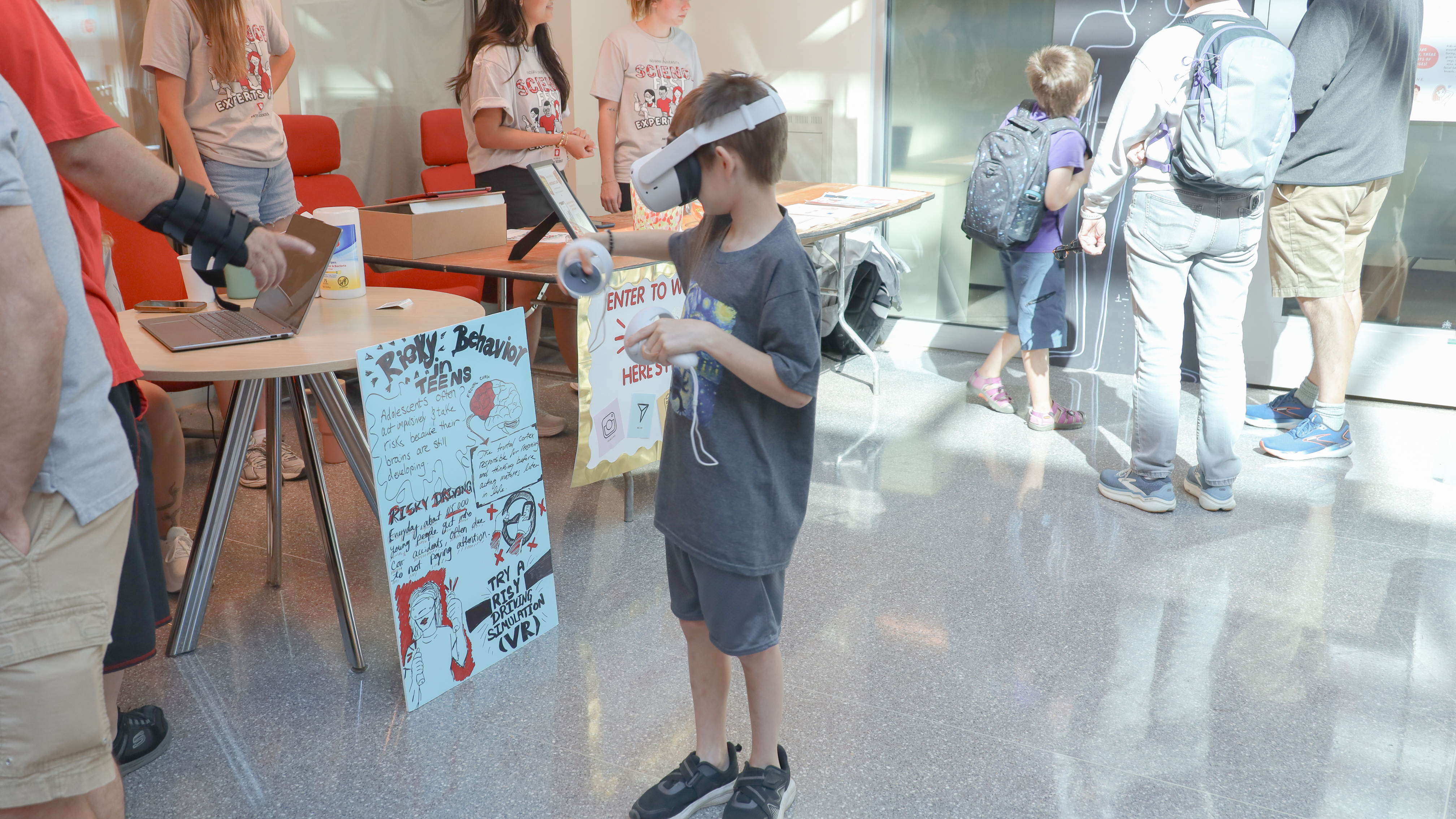On a bright Saturday in October, members of PBS labs participated in the campus-wide Science Fest with four booths set up in Franklin Hall and a special outdoor concert about the brain.
At one end of the room, Naman Satsangi and Chet Wilson, both seniors majoring in neuroscience, welcomed children to their table. Here, kids could color images of the brain, cut them out and shape them into wearable helmets. They could also construct neurons out of pipe cleaners and Styrofoam. Satsangi is a research assistant in Professor Karin James’ Cognition and Action Neuroimaging Lab and Wilson, a research assistant in Professor Emily Fyfe’s Learning, Education and Development Lab.
“It’s important to give kids some concept of what the brain looks like,” explained Satsangi, “and what its cellular units looks like. When you can look at it and say, this is a speech area or this is a motor area, it gives them a tangible understanding of how it works.”
Coloring in his own picture of the brain, Teddy, a homeschooled 11-year-old from Bloomington, paused to ask, “What is the most important part of the brain?” The research assistants smiled and suggested that it is the way all these regions work together that is perhaps most important, and they continued to color and chat.
Across the room were members of Professor Liz Gunderson’s Cognition and Learning Lab: two undergraduate research assistants Anna de Four and Annie Beardmore, postdoctoral student Hyekyung Park and Leslie Amarachi Duru, a lab manager and 2023 UCLA graduate with a B.S. in Psychobiology. Their visitors engaged with puzzles and blocks designed to enhance spatial skills and build confidence in younger children.
Researchers were surprised by how many people were drawn to the activities. “I thought only young children would be interested in this,” said one, “but we have teenagers and parents trying to figure them out, too.”
“It’s been fun,” said another. “The kids concentrate very well and every time I tell them that certain pieces don’t fit in a certain puzzle, they grab those pieces and try to prove me wrong.”
Another popular attraction was the miniature racetrack. Attendees could put on a headset and using the power of their own brains, could send the cars spinning around the track.
At a booth run by members of Professor Natasha Chaku’s InterACT Lab on adolescent development, kids could try out a virtual reality driving game. As their poster explains, adolescents often act impulsively and take risks because their brains are still developing, and this makes them more susceptible to risky driving. Using this “Safe Driving Simulation,” they can get in a car, turn on the ignition and try to stay in the lane.
Head back out into the sunshine and you would find postdoctoral fellow, singer-songwriter and PBS Ph.D. alum Taylor Woodward performing a set of his own compositions. Among these songs was “You are my neurons,” sung to the tune of “You are my sunshine;” a clever song about what happens if you leave home without your cerebellum; as well as a love song about the brain, “I love you with all of my brain.” Children danced along, some with the brain helmets they made earlier.



 The College of Arts
The College of Arts